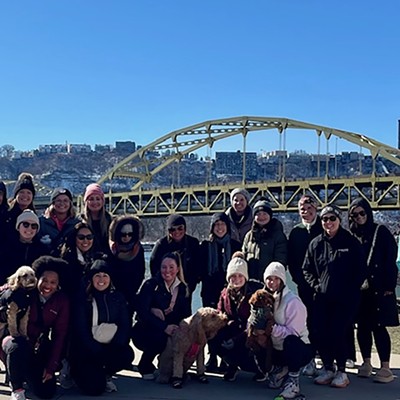Pittsburgh may be shedding its image as a smoky crucible of industry, but according to a new study, it's still tops in the nation for soot in the air.
"Soot pollution is the nation's worst pollutant," says Stephen Rogness, legislative associate for PennEnvironment, the group that presented the study locally. The study was executed by U.S. PIRG Education Fund. While soot may not be the most toxic pollutant, its tiny size and seeming invisibility make it extremely pernicious, bypassing the body's natural defenses. Fine particle pollution, or soot, can lodge deep in lung tissue and enter the bloodstream, leading to health problems such as heart attacks, respiratory problems including more severe attacks for asthmatics, stroke and cancer.
"Pittsburgh is at the top of the list that no city wants to be on," says Rogness.
Major sources of soot include power plants and diesel engines. The Pittsburgh area is a hub for coal-fired power plants, Rogness notes, while trucks running on diesel fuel hammer the area's highways to and from East Coast destinations. The report also cites air currents bringing dirty air to the region from Midwestern power plants
PennEnvironment notes the Hatfield's Ferry plant in Greene County as among the top contributors to soot pollution locally. Fred Solomon, spokesperson for Allegheny Energy, the parent company of Hatfield's Ferry, acknowledges that the plant is a problem, but that a fix is in the works. "We plan to put a scrubber on Hatfield's Ferry," Solomon says. "It could be in by 2009. We're constantly working to improve our emissions controls to be in line with federal and state regulation."
The study, "Plagued by Pollution," looked at data on fine particle pollution in 2004 as recorded by the Environmental Protection Agency's 1,175 air quality monitors throughout the nation. It found that the Pittsburgh metropolitan area had the greatest number of days when levels of soot in the air exceed what the EPA considers safe for people to breathe in a single day -- seven days of such "spikes." The Riverside-San Bernardino-Ontario metro area of California was second, with six days. Los Angeles, San Francisco and San Diego rounded out the top five, with four, one and one days respectively. The Pittsburgh metro area also ranked second nationwide for chronic fine-particle pollution, the amount people are exposed to over the course of a year.
In June 2005, EPA scientists and an independent review committee found that current standards didn't do enough to protect public health. The Bush administration ignored that report and proposed new regulations that left the annual standard the same and tightened the daily standards only slightly.
"We have a proud record of shedding the image of the smoky city," says City Councilman Bill Peduto, who joined PennEnvironment and other groups in releasing the report. "Unfortunately, we're at a disadvantage when it comes to the federal government. The Bush administration is willing to ignore its own advisers."
The proposed new standards are in the hands of Congress.













